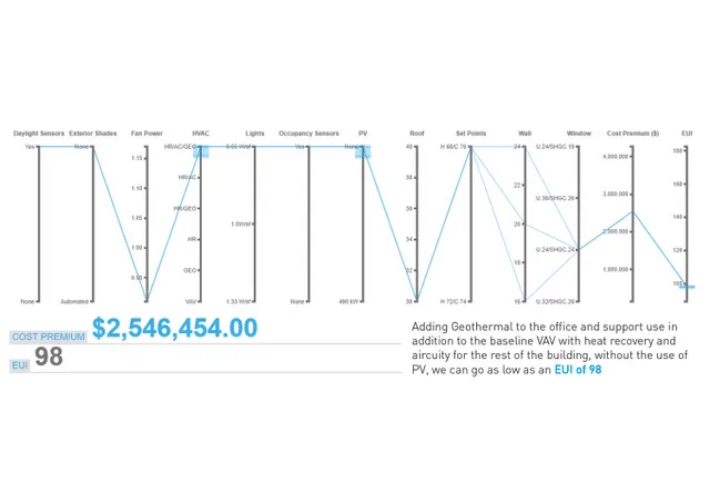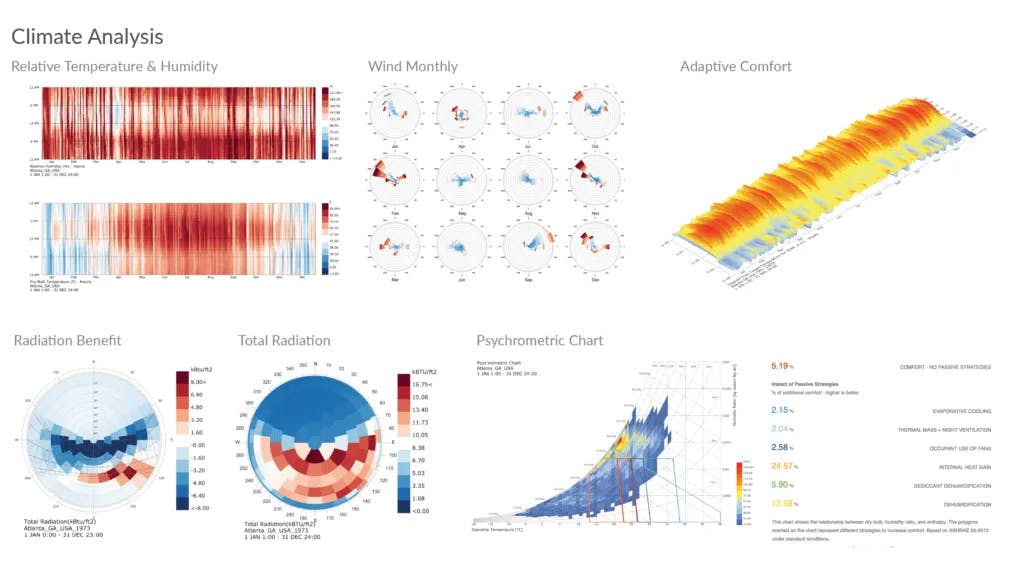In the rapidly evolving world of architecture, the integration of Artificial Intelligence (AI) is not just innovative; it's revolutionizing how architects and firms approach sustainable design.
By leveraging AI, architecture firms are now equipped to enhance sustainable design principles, automate complex processes, and deliver more environmentally friendly buildings more efficiently than ever before.
Enhancing Sustainable Design Principles with AI
Sustainable design principles are fundamental to reducing the environmental impact of new buildings and renovations. These principles include optimizing site potential, minimizing non-renewable energy consumption, using environmentally preferable products, and maximizing water efficiency. AI helps architects and design firms to integrate these principles more deeply and effectively into their projects.
For example, AI can analyze historical data and learn from existing building performances, making it possible to predict outcomes for new designs more accurately. This capability allows architects to optimize the environmental impact of their projects from the outset.
Architecture firms can use AI to model different sustainable scenarios, helping them to make decisions that align with long-term sustainability goals, such as reducing carbon footprints and enhancing building occupants' well-being.
AI can help integrate zoning, cost estimation, and climate analysis into your building designs.
Zoning and AI

Zoning regulations are fundamental in defining the structure and purpose of urban developments, aligning them with community standards and environmental benchmarks. AI technologies are becoming indispensable in this area by intricately analyzing zoning codes to propose design adaptations that not only comply with local mandates but also enhance sustainability. This capability allows architects and planners to swiftly navigate complex regulatory landscapes, streamlining the design process.
Moreover, by integrating AI-driven insights into zoning compliance, sustainable architecture firms can craft building proposals that are not only efficient but also environmentally responsible. This approach not only ensures adherence to legal frameworks but also promotes the principles of sustainable design, optimizing project outcomes in harmony with ecological and community values.
AI-Powered Cost Estimating

In the realm of sustainable design, accurate cost estimation emerges as a pivotal phase for any building project. It not only determines the feasibility of a design but also shapes its scope, ensuring that sustainability goals are met within budgetary constraints.
AI-powered tools are revolutionizing this aspect by providing architects and designers with precise, real-time cost analyses. These tools leverage historical data and advanced algorithms to forecast expenses and identify cost-saving opportunities, aligning with the principles of sustainable architecture.
By enabling firms to integrate economic efficiency with environmental stewardship, these next-level systems help in creating designs that are both financially viable and ecologically sound. This integration of AI in cost estimation not only optimizes resources but also supports the broader objectives of sustainable architecture, enhancing project outcomes across the board.
Climate Analysis

Integrating climate data into architectural design is essential for advancing sustainability. As the impact of climate on buildings becomes increasingly pronounced, architects and designers must embrace detailed environmental data to inform their projects.
AI technologies enhance this process by synthesizing vast amounts of climate information, enabling the creation of designs that respond dynamically to both current and projected environmental conditions. This capability supports sustainable architecture firms in their quest to develop buildings that are not only energy-efficient but also resilient to changing climates.
By using AI to analyze and apply climate data, designers can optimize natural resource use and improve the overall sustainability of their projects, all while adhering to the core principles of sustainable design. This strategic incorporation of AI aids in mitigating environmental impacts and elevates the standard of living within the built environment.
cove.tool Ahead of the AI Curve
At the forefront of integrating AI with sustainable architectural design, cove.tool harnesses the power of its AI-driven platform to revolutionize three critical aspects: cost estimating, zoning compliance, and climate analysis.
cove.tool's project.assist, an AI-powered sustainability consultant, automates the intricate process of cost prediction by leveraging real-time data analytics and historical cost records. This allows architects to refine their designs in alignment with financial and environmental objectives, ensuring materials and construction techniques comply with sustainable principles.

Additionally, cove.tool's sophisticated AI engines conduct comprehensive climate analyses. This capability empowers designers to create buildings attuned to environmental conditions and seasonal variations, promoting energy efficiency by optimizing natural light and reducing HVAC reliance.
Together, these tools provide a holistic AI solution that not only streamlines the compliance with zoning regulations but also enhances the overall sustainability of building projects, making cove.tool an invaluable ally for sustainable architecture firms aiming to elevate their design approach.
The Future of AI in Sustainable Architecture
The role of AI in sustainable architecture is set to grow. Future trends might include the development of more advanced AI that can autonomously generate design modifications based on real-time environmental data or AI systems that integrate deeper learning about material sciences to recommend sustainable materials more effectively.
Moreover, as AI technology advances, its accessibility is also expected to increase, allowing firms of all sizes to leverage these powerful tools. This democratization of technology will likely lead to a broader adoption of sustainable practices across the industry, setting new standards for environmental responsibility in architecture.
Conclusion
AI is not just a fad; it's a transformative force in the field of sustainable architecture. By enhancing design principles, streamlining compliance with zoning, providing accurate cost estimates, and analyzing climate data, AI supports architects in creating buildings that are both innovative and environmentally responsible. As we continue to embrace these technologies, the future of architecture looks greener and more sustainable than ever, propelled forward by the intelligent application of AI in design processes.